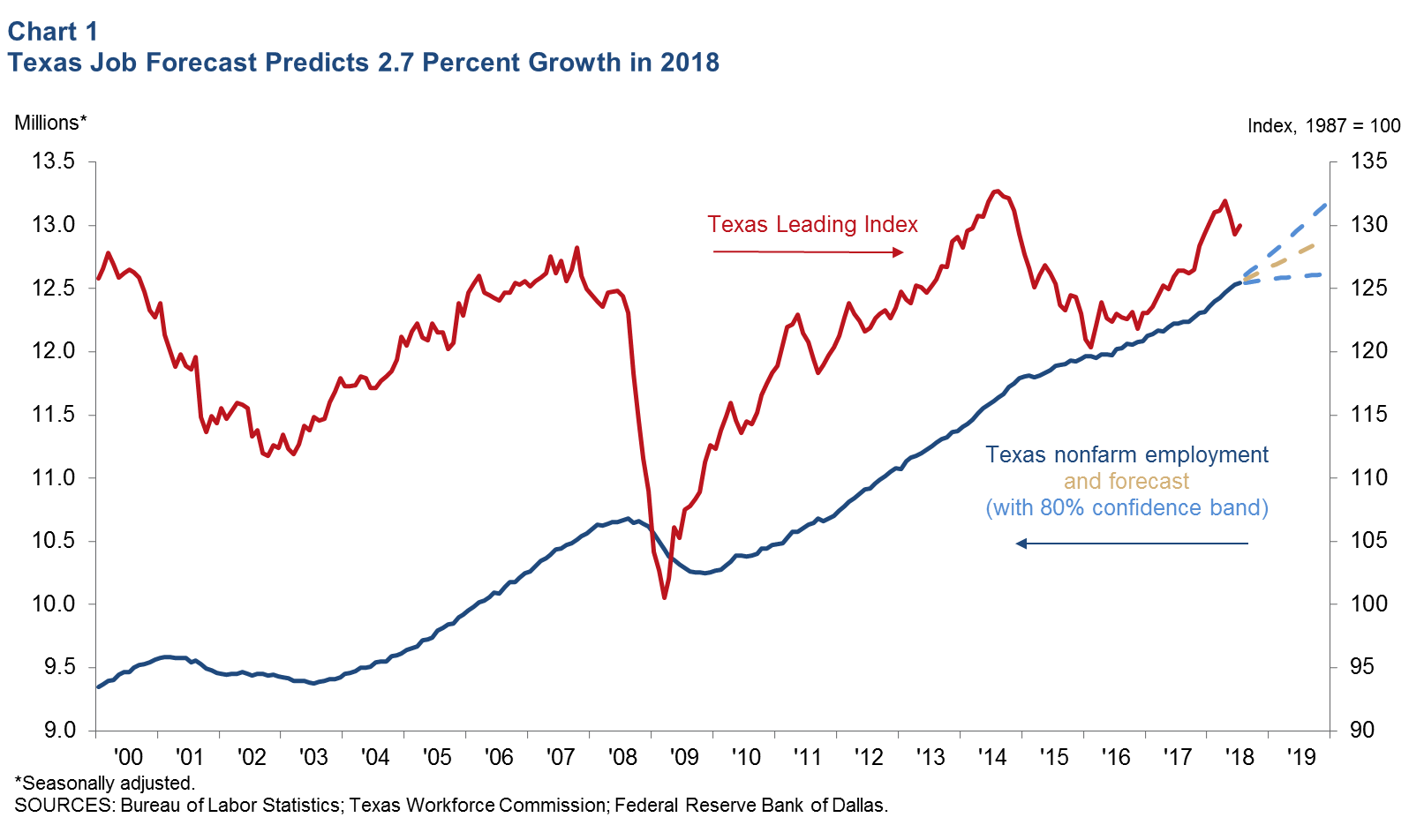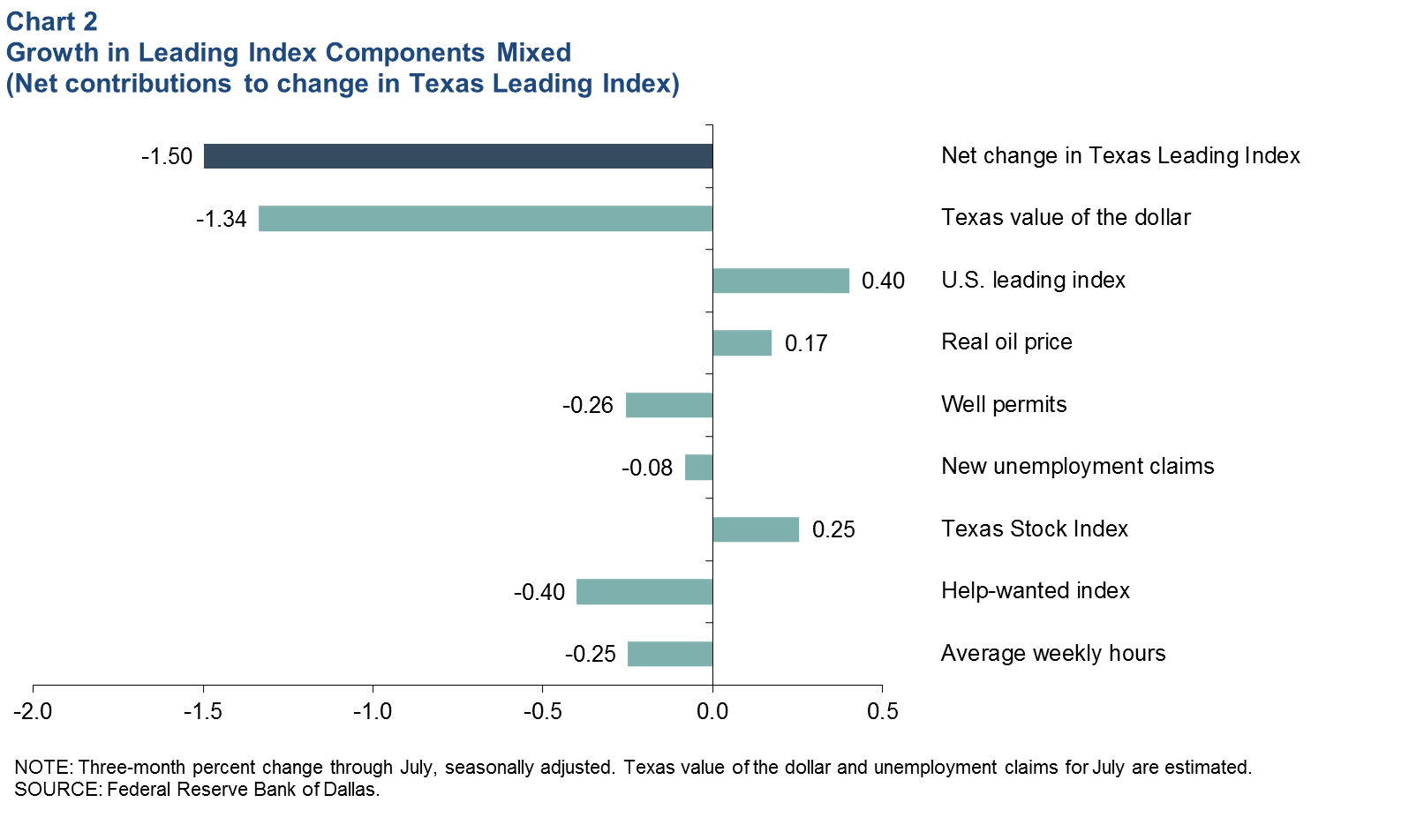Texas Employment Forecast

Incorporating July employment growth of 1.3 percent and new leading index data, the Texas Employment Forecast suggests jobs will grow 2.7 percent this year (December/December), with an 80 percent confidence band of 2.1 to 3.3 percent. Based on the forecast, 337,700 jobs will be added in the state this year, and employment in December 2018 will be 12.7 million (Chart 1).
“After growing at a strong pace of 3.7 percent during the first five months of the year, job growth has cooled over the past two months,” said Keith R. Phillips, Dallas Fed assistant vice president and senior economist. “Manufacturing employment declined in July after surging in the first half of the year. Also, the reconstruction efforts following Hurricane Harvey may be starting to slow as job growth in Houston has weakened. Overall the forecast suggests that 2018 will be a good year for the Texas economy, although the second half will be more subdued than the very strong first half.”
The Dallas Fed’s Texas Leading Index declined over the three months ending in July, slipping 1.5 percent (Chart 2). Growth was mixed across components, with an increase in the Texas trade-weighted value of the dollar and a decline in help-wanted advertising being the most significant drags on the overall index. An increase in the price of oil, rise in the U.S. leading index and gains in stock prices of Texas companies were moderately positive additions.


Next release: September 21, 2018
Methodology
The Dallas Fed Texas Employment Forecast projects job growth for the calendar year and is estimated as the 12-month change in payroll employment from December to December. The forecast reported above is a point estimate with 80 percent confidence bands; in other words, the true forecast lies within the bands on Chart 1 with 80 percent probability.
The Dallas Fed Texas Employment Forecasting Model is based on a transfer function that utilizes past changes in state employment along with past changes in the Dallas Fed Texas Leading Index (TLI). Changes in the TLI have an impact on employment with a lead time of three months, and the effect dies out slowly over time. The regression coefficients on lagged changes in employment and the TLI are highly statistically significant, and the model as a whole has been accurate relative to other forecasters over the past two decades.
The forecasting model has been in use at the Dallas Fed since the early 1990s, and the employment forecast has been published in the Western Blue Chip Economic Forecast (WBCF) since 1994. Phillips and Lopez (2009) show that the model has been the most accurate in forecasting Texas job growth relative to other forecasters in the WBCF. In particular, the model had the lowest root mean squared error and has been the closest to the actual the most times (nine of the last 17 years) out of five forecasters that have consistently participated in the survey.
For more details about the model and its performance, see “An Evaluation of Real-Time Forecasting Performance Across 10 Western U.S. States,” by Keith R. Phillips and Joaquin Lopez, Journal of Economic and Social Measurement, vol. 34, no. 2–3, December 2009.
Contact Information
For more information about the Texas Employment Forecast, contact Keith Phillips at keith.r.phillips@dal.frb.org.